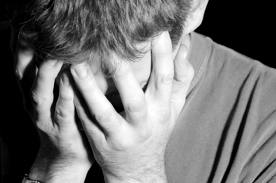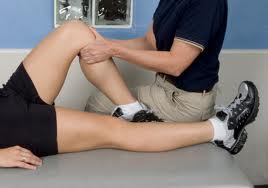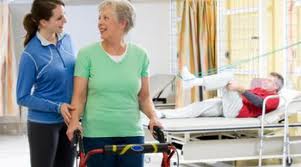Rehabilitation Basics
TweetRehabilitation has a very wide application - whether it is criminal rehabilitation, physical rehabilitation, mental rehabilitation, etc. The application lies in the simple fact that it means getting life back to the same normal state as it was before the trauma, accident, crime, disaster, etc. Learn from the resources below, the different angles of rehabilitation.
Various faces of Rehabilitation
Rehabilitation comprises of programs which help patients adjust to health problems or disablement and return to a full productive life. Rehabilitation may involve physical restoration, such as the use of prostheses, or emotional help such as counseling or providing emotional support.
Top Stories in Rehabilitation
 Drug Rehabilitation for Teens - Because there is no Administrative Agency that regulates behavioral treatments, many drug programs have no research evidence for their effectiveness or even safety Drug Rehabilitation for Teens - Because there is no Administrative Agency that regulates behavioral treatments, many drug programs have no research evidence for their effectiveness or even safety |
 Drug and Alcohol Rehabilitation - The general intent is to enable the patient to cease substance abuse, in order to avoid the different consequences. Drug and Alcohol Rehabilitation - The general intent is to enable the patient to cease substance abuse, in order to avoid the different consequences. |
|
 Sports Rehabilitation - Sports rehabilitation is a multi-disciplinary approach to treat injuries sustained through sports participation so the athlete can regain normal pain-free mobility. Sports Rehabilitation - Sports rehabilitation is a multi-disciplinary approach to treat injuries sustained through sports participation so the athlete can regain normal pain-free mobility. |
 Rehabilitation Therapy - Rehabilitation, or rehab, therapy refers to the therapeutic, healing treatment a patient receives after an illness or injury. Rehabilitation Therapy - Rehabilitation, or rehab, therapy refers to the therapeutic, healing treatment a patient receives after an illness or injury. |
|
| Drug Rehabilitation Center - Psychological dependency is addressed in many drug rehabilitation programs by attempting to teach the patient new methods of interacting in a drug-free environment. | Traumatic Brain Injury Rehabilitation - Traumatic brain injury (TBI) commonly affects younger people and causes life-long impairments in physical, cognitive, behavioural and social function. |
More on Rehabilitation
- Cardiac Rehabilitation
- Cognitive Rehabilitation
- Drug Rehabilitation
- Drug Rehabilitation Center
- Rehabilitation Programs
- Brain Injury Rehabilitation
- Drug Rehabilitation Facility
- Drug Rehabilitation for Teens
- Drug Rehabilitation Program
- Knee Rehabilitation
- Alcohol Rehabilitation Centers
- Rehabilitation Product
- Rehabilitation Services
- Rehabilitation Specialist
- Criminal Rehabilitation
- NovaCare Rehabilitation
- Occupational Rehabilitation
- Physical Rehabilitation
- Physical Rehabilitation Therapy
- Rehabilitation Center
- Rehabilitation Clinic
- Rehabilitation Counselor
- Alcohol Rehabilitation Program
- Alcohol Rehabilitation
- Stroke Rehabilitation
- Traumatic Brain Injury Rehabilitation
- Drug and Alcohol Rehabilitation
- Drug and Alcohol Rehabilitation Center
- Rehabilitation Equipment
- Rehabilitation Facility
- Rehabilitation Hospital
- Rehabilitation Medicine
- Rehabilitation Nursing
- Prisoner Rehabilitation
- Pulmonary Rehabilitation
- Rehabilitation Therapy
- Sports Rehabilitation
- Vocational Rehabilitation Services
It is the returning to a state of health and useful activity. Rehabilitation is an organized program of medical and clinical treatment designed to maximize residual physical, perceptual and cognitive abilities following disablement. This refers to the overall process of ensuring that people make the best possible recovery from their stroke. It usually involves help from a range of health and social care professionals.
Rehabilitation of sensory and cognitive function typically involves methods for retraining neural pathways or training new neural pathways to regain or improve neurocognitive functioning that has been diminished by disease or traumatic injury.
Keys for succcessfull Rehabilitation
After decades of experience many rehabilitation professionals have found the common keys to making the most of the rehabilitation process:
- Those who make the most of their recoveries tend to have an optimistic outlook, are usually more giving and selfless than most people, and don’t tend to give up easily. Rehabilitation may the hardest thing you’ve ever done but look at it positively.
- Try to develop a schedule that includes as much activity your loved one can handle without becoming too tired. Remember that fatigue, initiation and motivation are often big problems after an injury, so make gentle encouragement the theme to home rehabilitation.
- Create some strategies for compensating for this problem by developing lists, post-it notes, cue cards or any other strategies that help the person feel more independent and less likely to make mistakes and be nagged or scolded.


Sometimes crying or laughing
are the only options left,
and laughing feels better right now.

Current Issue
 Self Help Leaflets Take the help of our self help leaflets or booklets. |
 The DG Magazine All about living with depression |
Rehabilitation
- Cardiac Rehabilitation
- Cognitive Rehabilitation
- Drug Rehabilitation
- Drug Rehabilitation Center
- Rehabilitation Programs
- Brain Injury Rehabilitation
- Drug Rehabilitation Facility
- Drug Rehabilitation for Teens
- Drug Rehabilitation Program
- Knee Rehabilitation
- Alcohol Rehabilitation Centers
- Rehabilitation Product
- Rehabilitation Services
- Rehabilitation Specialist
- Criminal Rehabilitation
- NovaCare Rehabilitation
- Occupational Rehabilitation
- Physical Rehabilitation
- Physical Rehabilitation Therapy
- Rehabilitation Center
- Rehabilitation Clinic
- Rehabilitation Counselor
- Alcohol Rehabilitation Program
- Alcohol Rehabilitation
- Stroke Rehabilitation
- Traumatic Brain Injury Rehabilitation
- Drug and Alcohol Rehabilitation
- Drug and Alcohol Rehabilitation Center
- Rehabilitation Equipment
- Rehabilitation Facility
- Rehabilitation Hospital
- Rehabilitation Medicine
- Rehabilitation Nursing
- Prisoner Rehabilitation
- Pulmonary Rehabilitation
- Rehabilitation Therapy
- Sports Rehabilitation
- Vocational Rehabilitation Services












